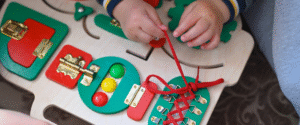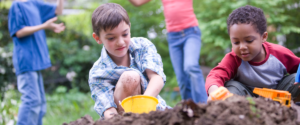
SMOOTH SAILING THROUGH LIFE’S CHANGES: MASTERING EMOTIONAL REGULATION DURING TRANSITIONS
As we delve deeper into 2024, emotional regulation is a prominent theme that goes hand in hand with supporting transitions.
Understanding Transitions
Transitions in life are inevitable. Whether it’s starting a new school year, moving to a new home, or experiencing changes within the family dynamic, transitions can be challenging for both parents and children alike. During these times of change, emotions can run high, leading to stress and uncertainty.
What is Emotional Regulation?
Emotional regulation refers to an individual’s ability to recognise, process and act upon the emotions that they feel within different situations on a regular day. It is one’s ability to adjust and control their energy level, emotions, behaviours, and attention to allow for success in connecting with our loved ones and engaging in our daily lives. We provide even more information on our “Tools to Support Emotions” blog.
Emotional regulation is a skill that is developed over time. Emotional regulation is essential for healthy emotional development and well-being throughout life. There are two stages to emotional regulation.
Co-regulation is the foundation for emotional development, allowing children to explore, learn and understand unfamiliar situations while parents support them by providing a safety net.
Self-regulation involves the ability to notice and change/control one’s own feelings and adapt to surroundings. Emotional regulation is essential for healthy emotional development and well-being throughout life. To find out more information, refer to our “Emotional Regulation” blog.
The Emotional Rollercoaster
Transitions can evoke a range of emotions, from excitement and anticipation to anxiety and fear. Children who thrive on routine and stability may feel their sense of security disrupted, leading to vulnerability and insecurity. Similarly, parents may experience a mix of pride, worry, and doubt as they navigate unfamiliar territory. With the right tools and support, families can navigate transitions more smoothly, fostering emotional regulation and resilience along the way.
Strategies for Emotional Regulation
So, how can we help you support your child emotionally regulate during transitions? As Occupational Therapists, our role is to enable children and parents to recognise, understand and manage their emotions during times of change. Whether they are transitioning from breakfast to getting dressed or from home to school, navigating our emotions is a difficult task and can depend heavily on our sense of safety within ourselves and others and our connection to place, person, or thing.
Here are some practical strategies and tools:
1. Transition Time: Allow ample time for transitions, providing a buffer for individuals to adjust mentally and emotionally.
2. Observation: Pay attention to the child’s body language, affect, tone of voice, and overall demeanour to gauge their emotional state.
- Are we slouching our shoulders or dropping our head?
- Are we smiling, and are our faces lit up?
- Is our tone of voice low, high-pitched, or fast-paced?
- Do we appear frazzled or disinterested?
- Do we seem tired or overwhelmed from something that happened earlier?
3. Tools and Techniques we utilise, and you can too.
- Visual schedules for predictability and routine. This also provides a point of orientation.
- Visual timers to set task timeframes and provide visual information of how long the task is.
- Therapressure brushing is a technique for grounding and calming.
- Therapeutic use of self for connection, following their lead and co-regulation.
- Breathing exercises such as belly breathing or blowing bubbles.
- Incorporating vestibular input through activities like wobble boards.
- Providing oral input with stretches, cold drinks, or chewy foods.
Setting the Body Up
We call this process ‘Setting the Body Up’ as this prepares the body with sensory input and transition time to ease into daily activities.
Once our body is adequately ‘set up’ and we’ve allowed ‘transition time’. Transitions into daily activities won’t be as overwhelming.
Emotional Continuum
We use cognitive-emotional strategies to support the emotional continuum. Strategies like sensory processing and cognitive strategies can help refine knowledge and apply skills in social situations. To learn more about how we use the above techniques as well as “Zones of Regulation,” “Size of Problem vs Reaction,” “The Alert Program,” “The Incredible Flexible You Series,” and “The Social Thinking Detectives” refer to our “The Emotional Continuum” blog.
Embracing Change Together
Transitions are unpredictable, and allowing yourself grace in navigating them is essential. Understanding your own triggers and emotions is key to understanding how to emotionally regulate yourself. As parents, showing vulnerability can help model to our children that, YES, change can be scary, but you can do this as a TEAM. Encourage open communication about challenges and solutions, empowering your child to take ownership and responsibility for the transition process.
Ask your child and yourself what is challenging about the transition to school/work or what makes it hard to go to soccer training or out for a catch-up with a friend in the afternoon, and what could we do to make it easier? This collaboration provides a sense of ownership and responsibility for our child and can result in increased adherence to routine, reducing the risk of emotional dysregulation.
Ready to embark on a smoother journey through life’s transitions? Start implementing these strategies today to foster emotional regulation and resilience in your family. Remember, every small step counts towards a smoother sail!
By implementing these strategies and fostering a supportive environment, families can navigate transitions more smoothly, fostering emotional regulation and resilience along the way. Contact us today if you would like to chat about transitions and how we can help.
If you’d like to chat more, please don’t hesitate to contact us today! Call us on 0477 708 217 or email admin@exploreandsoar.com.au
Until Next Time,
Molly
PUBLISHED MARCH 2024







